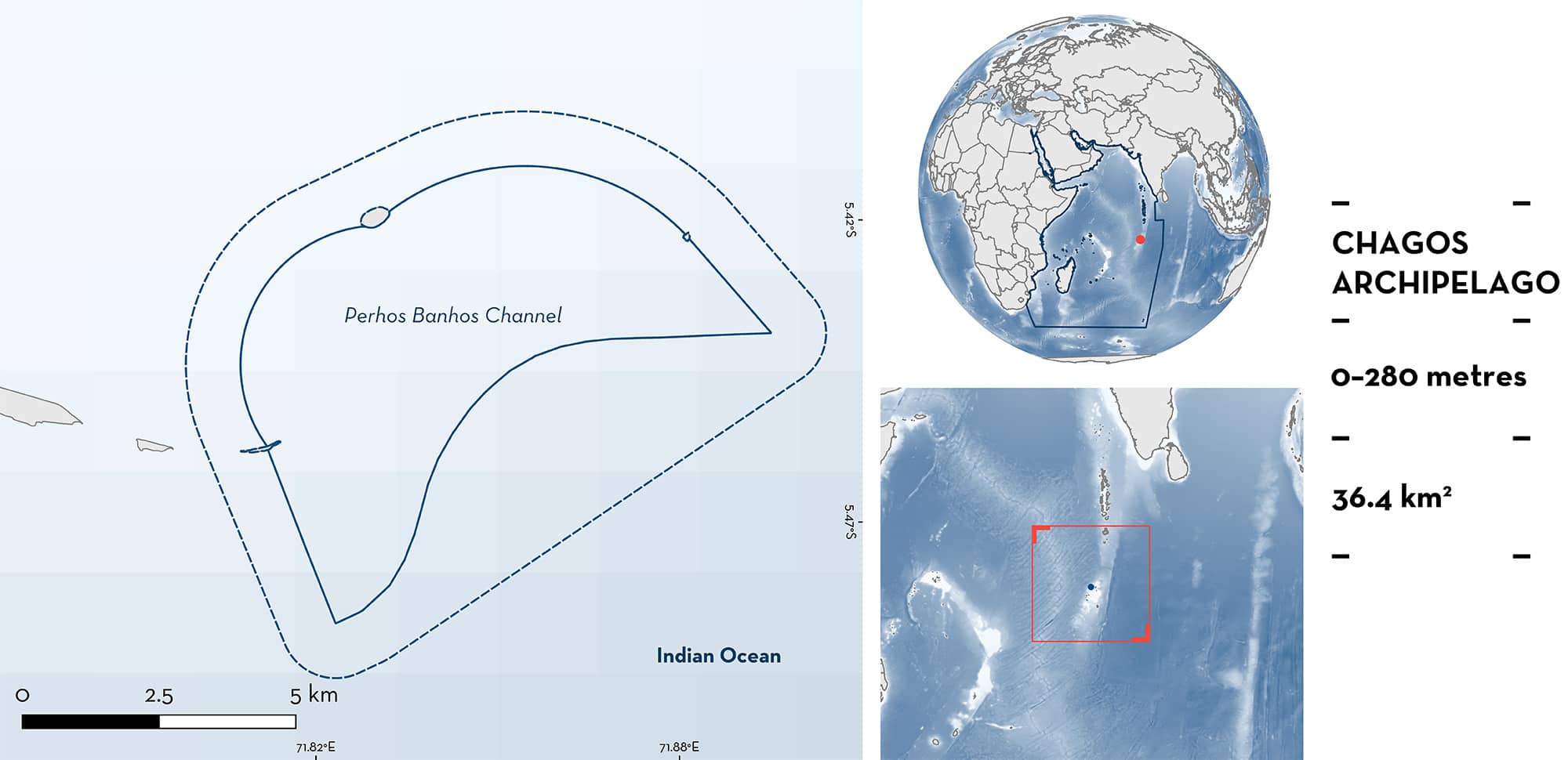ISRA FACTSHEETS
ISRA FACTSHEETS
WESTERN INDIAN OCEAN REGION
Perhos Banhos Channel
Summary
Peros Banhos Channel is located in the northern Chagos Archipelago. The habitat is characterised by fringing coral reefs, a lagoon, patch reef, and seagrass beds as well as oceanic areas on the southern side. This area sits within the British Indian Ocean Territory Marine Protected Area. Within this area there are: threatened species and undefined aggregations (Grey Reef Shark Carcharhinus amblyrhynchos).
Download factsheet
Perhos Banhos Channel
DESCRIPTION OF HABITAT
Peros Banhos Channel is located in the northern Chagos Archipelago, central Indian Ocean. It lies ~30 km north of the Great Chagos Bank. This area encompasses the southern channel of Peros Banhos, between the islands of Ile Fouquet, Ile Vache Marine, and Coin du Mire. It includes sections of inner and outer reef surrounding the channel including the drop off to the deeper Indian Ocean. The habitat in the area consists of fringing coral reefs, a lagoon, patch reef, and seagrass habitats as well as oceanic habitats on the southern side.
The climate in the area is tropical and moderated by trade winds (Eisenhauer et al. 1999). The area is exposed to strong persistent distant-source swells originating in the southern Indian Ocean during the southeast monsoon (April to September). The northwest monsoon (November to March) is dominated by light north-westerly winds, higher rainfall, and warmer temperatures (Schott & McCreary 2001). Combined tidal and wind driven currents are strong in the area, especially through the channel between the islands. Deep water channels exert significant control over local hydrodynamic conditions, which are important drivers of planktonic distributions (Sheehan et al. 2019).
This Important Shark and Ray Area is benthopelagic and is delineated from inshore and surface waters (0 m) to 280 m based on the global depth range of the Qualifying Species.
CRITERION A
VULNERABILITY
The one Qualifying Species within the area is considered threatened with extinction according to the IUCN Red List of Threatened SpeciesTM. The Grey Reef Shark is assessed as Endangered (Simpfendorfer et al. 2020).
CRITERION C
SUB-CRITERION C5 – UNDEFINED AGGREGATIONS
Peros Banhos Channel is an important area for undefined aggregations of one shark species.
Acoustic tags were surgically implanted in 160 Grey Reef Sharks (70–171 cm total length [TL]; n = 105 females, n = 51 males, and n = 4 unknown sex) between February–April from 2013 to 2021. Sharks were tracked for a maximum of eight years across five isolated atoll systems in the north of the Chagos Archipelago. The study array consisted of a total of 52 acoustic receivers (Jacoby et al. 2020). Tagged animals were detected whenever they came within ~500 m range of an acoustic receiver.
Aggregations of Grey Reef Sharks were identified from the co-occurrence of shark detections at the receivers (D Jacoby unpubl. data 2023). Considering the co-occurrence of three or more individuals at the same time (max = 10 individuals), two receivers, both located within the Peros Banhos Channel had 619 and 107 detections, respectively. These aggregations occurred from March to December. Results (based only on tagged animals) suggest larger aggregations of Grey Reef Sharks occur in the area, but the size and nature of these aggregations is unknown. It is possible that environmental conditions within the channel provide optimal conditions for sharks to feed, swim, or rest as was shown for Grey Reef Sharks in other similar environments (e.g., Papastamatiou et al. 2021).
Download factsheet
SUBMIT A REQUEST
ISRA SPATIAL LAYER REQUEST
To make a request to download the ISRA Layer in either a GIS compatible Shapefile (.shp) or Google Earth compatible Keyhole Markup Language Zipped file (.kmz) please complete the following form. We will review your request and send the download details to you. We will endeavor to send you the requested files as soon as we can. However, please note that this is not an automated process, and before requests are responded to, they undergo internal review and authorization. As such, requests normally take 5–10 working days to process.
Should you have questions about the data or process, please do not hesitate to contact us.


